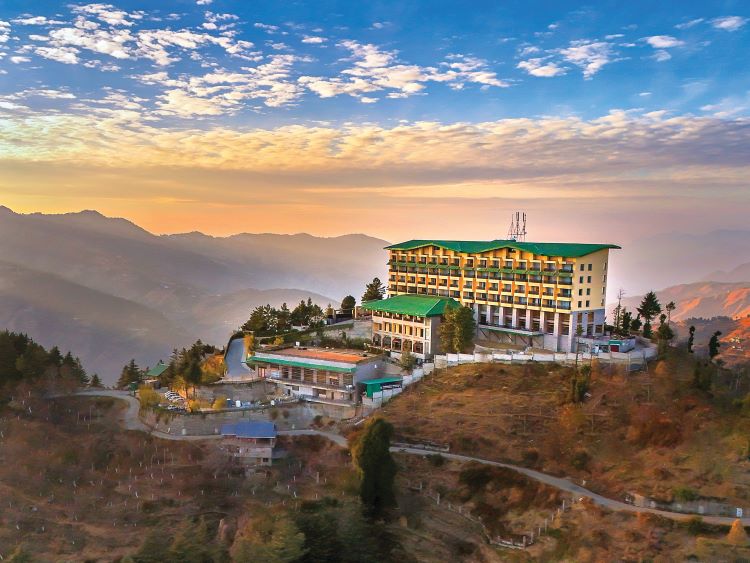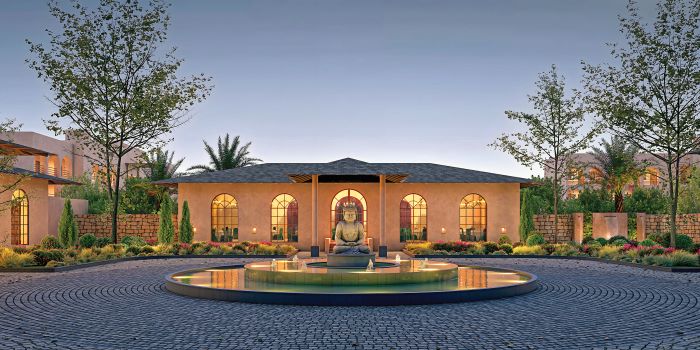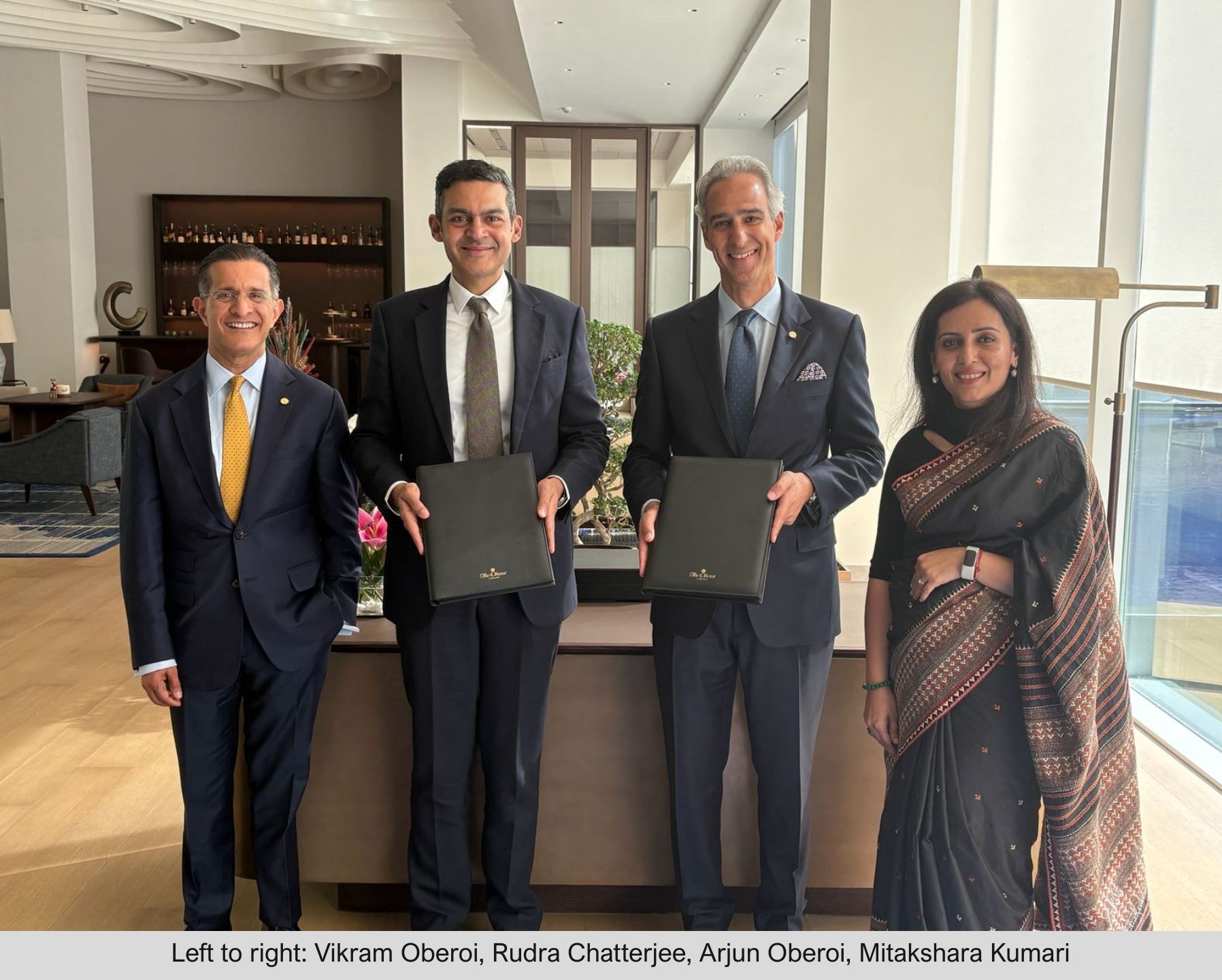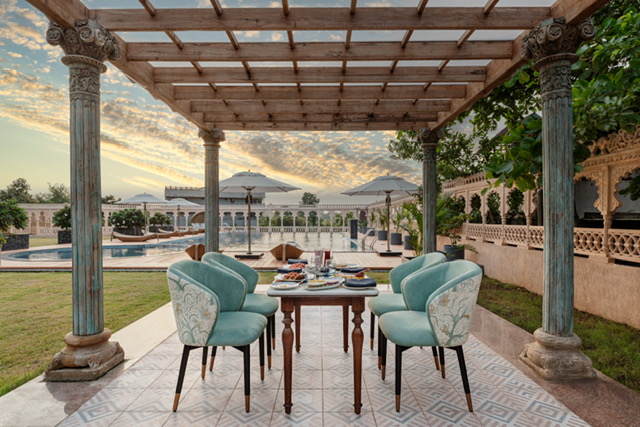In its second innings, Dusit International places its stakes on global brand reputation to re-establish its presence in Indian market.
Lipla Negi
Comebacks are not mere chances or coincidences—they are strategic! For Bangkok-headquartered Dusit International, this return to the Indian market could not be more timely. “India is one of our most crucial markets in the Asian region. The demand for premium hospitality has grown exponentially in recent years, extending even to tier II and III cities. This growth is driven by a large, young population that is aspirational, experimental, experience-focused and increasingly luxury-conscious. Additionally, India is one of the strongest wedding markets in Asia,” said Siradej Donavanik, Vice President, Global Development, Dusit International while speaking to HotelTALK.
For the third-generation hotelier and an ardent traveller himself Donavanik, fondly known as ‘Champ,’ the return holds both professional and personal significance. He said, “While it is true we have been absent from the Indian market for some time, our journey globally has been anything but quiet. I still vividly remember my first visit to India 16 years ago—it was also my first trip after joining the company. At that time, we had just 21 hotels. Today, we have grown to 60 hotels, and our footprint continues to expand. Beyond hospitality, our luxury real estate and villa offerings have also seen significant growth, now nearing 300 properties globally. We stepped away from India for a while, but our brand’s presence has only strengthened worldwide. And now, we see this moment as an incredible launchpad to re-enter the vibrant Indian market with renewed energy and ambition.”
Setting new standards of luxury in untapped regions across the country sits at the heart of Dusit’s expansion strategy in India. In the post-COVID landscape, the hospitality sector has witnessed a remarkable resurgence, with both homegrown or global brands announcing new hotel openings in rapid succession. In such a scenario, cutting through the competition could be quite an uphill task. But Deepika Arora, Head, India, Dusit International, sees it differently. At the helm of Dusit’s India expansion, she brings a clear and confident vision to the table—one that blends the brand’s global appeal with India’s evolving market dynamics. “We are not here to compete. We are here to stand out,” she declared.
Penetrating emerging markets
The brand has touched the 800-key mark across multiple strategic locations in India, aiming for 3000 rooms in the next three years. “The new signings include key business hubs such as Raipur, Bhiwadi and Kolkata, along with prominent leisure destination like Lonavala. We have also signed a new project in Sakleshpur, near Bengaluru,” Arora shared. Additionally, the brand is venturing into scenic boutique markets with two properties signed in Kasol and Manali under the Dusit Collection brand. “We have already launched our first dusitD2 in Fagu, near Shimla. It was chosen carefully for its potential in the destination wedding segment. The property can host weddings of up to 400-500 guests and addresses a gap in the banquet space in that region,” she further explained.
Moving forward, the hotel chain wants to strongly establish Dusit Princess in India’s tier II and III cities. “Founded by my grandmother, Dusit Princess is midscale brand that brings affordable luxury to emerging cities. We have signed a mixed-use development near Hyderabad, in Bagepalli, which includes a hotel and villas under the Dusit Princess brand. Another upcoming location includes Coorg,” Donavanik informed.
As an observant traveller, Donavanik believes that luxury experiences are undergoing a profound redefinition and reimagination. Today, the most sought-after destinations are often the untapped, unexplored gems. For him, India is home to an abundance of such distinctive, hidden locations. The realisation has become the driving force behind the brand’s second-run, anchored by a thoughtfully recalibrated approach. He explained, “Even in our home market of Thailand, some of the properties commanding the highest room rates are located in remote, offbeat destinations—deep in the jungle or nestled in the northern mountains. These are luxury experiences that travellers are seeking today. Similarly, India has immense untapped potential in this segment, with many such unique destinations still waiting to be discovered. We have restructured our brand architecture to offer tailored experiences in distinctive locations across the country.”
Embracing local approach
According to Donavanik, India has its own uniqueness and ways of operating, therefore, a localised approach would be more suited. The first phase of this re-entry will be a litmus test for more investment in future. “Just because something has worked well for us in Southeast Asia does not mean it can be replicated here. As we build stronger networks, we are committed to investing more resources into the country,” he said. Drawing similarity between the guest-centric cultures of India and Thailand, Donavanik is confident that Dusit has an edge in understanding client needs and expectations. “Indian weddings, especially in resort destinations, are a big part of what we do. We have a dedicated wedding sales specialist based at our headquarters whose sole focus is coordinating wedding-related requirements across different markets,” he stated. Agreeing with the sentiment, Arora asserted, “We seamlessly integrate wellness, hospitality and culinary experiences to create a complete and unforgettable wedding journey.”
He expressed hope for their newest brand ASAI hotels in India. Launched in 2020, right in the middle of the pandemic, the brand has been a lesson about resilience. “Many iterations later, here we are with three properties—two in Bangkok and one in Kyoto, Japan—and six more in the pipeline across Southeast Asia,” he shared. Built on the ‘Live local’ philosophy, ASAI has been able to strike a chord with the younger generation of travellers.
“To excel in the market, Dusit will blend its global appeal with the evolving dynamics of the Indian market”










